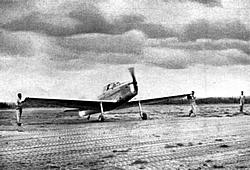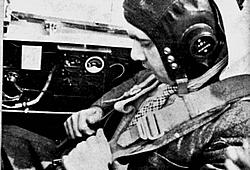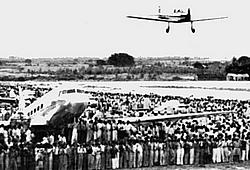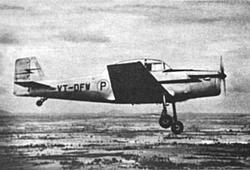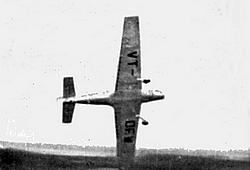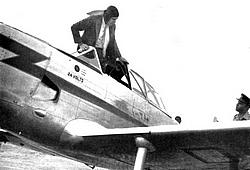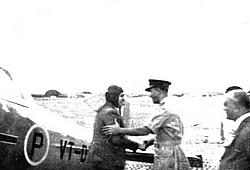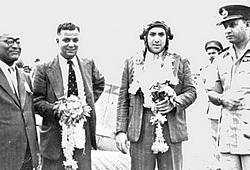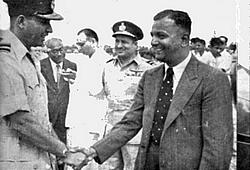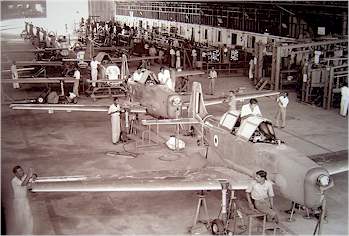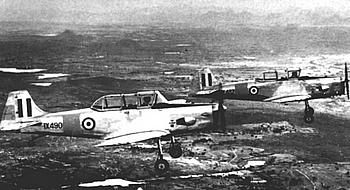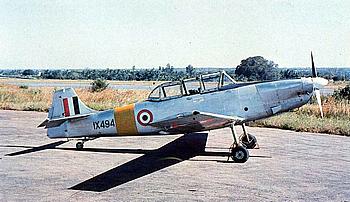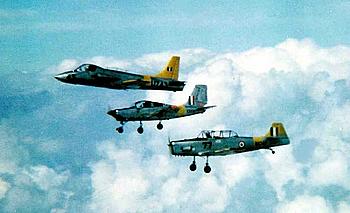India’s first trainer was built by a team from HAL led by Dr Ghatge. The HT-2 flew for three decades training the best of the best of India’s fliers
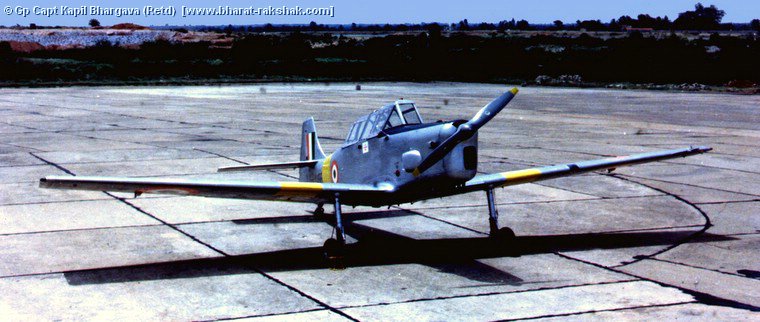
During World War II and even for some time after it ended, Hindustan Aircraft Limited (HAL) in Bangalore had mostly overhauled aircraft of the Allies and assembled some fighter and bombers of US origin. Young VM Ghatge obtained his doctorate in Aeronautical Engineering at Gottingen in Germany under the famous Dr Ludwig Prandtl. He joined HAL in its earliest days and deigned the G-1, a ten- seat glider in 1941. But once HAL was dedicated solely to war work, he went off to the Indian Institute of Science (also in Bangalore) to start an Aeronautical Engineering department. This turned out to be very beneficial to the indigenous aeronautical industry. Almost all HAL’s designers have been graduates of this institute.
After India became independent, the Royal Air Force handed over HAL back to Indian control. At last HAL could try designing its own aeroplanes. The normal Government red tape ensured that it was almost one year before the nucleus of an Aircraft Design Division was created in HAL. Dr Ghatge rejoined HAL and became its first Chief Designer. After much deliberation it was decided to design and develop a basic trainer aircraft to be used mainly by the Indian Air Force (IAF). The proposal was sent to the Government of India.
Government sanction releasing funds for the project arrived in HAL on an auspicious religious day on October 11, 1948. When the General Manager Mr A.H. Pandya announced this in the Design Division, there was much rejoicing and excitement at the prospect of designing a brand new aircraft within the country. Design work on the project soon began and a mock-up of the aircraft was ready by August 1949. Many authorities, including the Directorate General of Civil Aviation and IAF, examined it. While the design was generally accepted, some suggestions did emerge for improving it. The design was frozen quite fast. Some design drawings for the structural test specimens had been issued even before the mock-up was ready. The progress was impressively rapid. Final aircraft layout drawings were ready by February 1950. Metal cutting began immediately.
The Aircraft
By October 1950, assembly of the wings was well on the way. A month later the fuselage was easily recognisable as that of the new Hindustan Trainer 2 (HT-2). After some structural tests on the fuselage and the wings, they were mated in May 1951. Meanwhile structural tests of the undercarriage and the seat had been completed. After final assembly and fitment of instruments etc, the aircraft was ready for weighing in July 1951. The exit from the overhaul hangar had a weighing platform for aircraft such as the wartime overhauled Dakotas and Catalinas, etc. This was also used for the HT-2. The first prototype had a Gipsy Major 145 hp engine and a wooden propeller.
The engine was run for the first time on July 27.
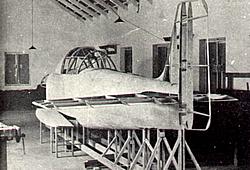 |
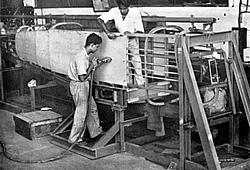 |
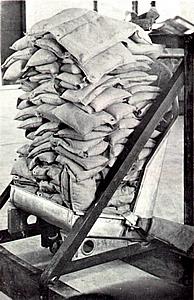 |
| HT-2 Mock up Aug 49 | The Fuselage Nov 50 | Seat Strength Test |
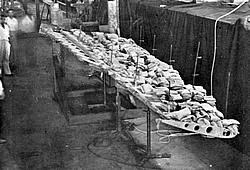 |
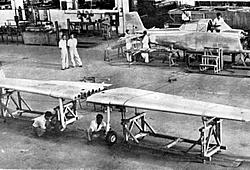 |
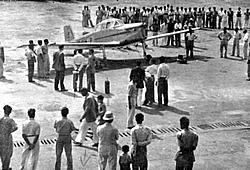 |
| Wing Load Test May 51 | Wings ready to be mounted May 51 | First engine run July 27, 51 |
The Pilot
Captain Jamshed Kaikobad (Jimmy) Munshi, the first post-independence Chief Test Pilot (CTP) of HAL had already distinguished himself by ferrying 42 junked B-24 Liberators from Kanpur to Bangalore, a distance of almost 1100 statute miles (955 nm). These aircraft had been just about patched up by an HAL team and were barely flyable. Eventually, after their refurbishing they were delivered to the Indian Air Force (IAF) and were used by four of its units till 1968 (Flypast March 2004, Page 87). Capt Jimmy Munshi had also done excellent work on overhauled Dakotas. He was the favourite pilot of independent India’s first Home Minister Sardar Vallabh Bhai Patel who due to heart problems had to fly in a Dakota within a special pressurised cabin contained in the fuselage. This modification was also done by HAL, and tested and cleared by the CTP.
Capt Jimmy Munshi must have felt that the HT-2 was like a toy. He taxied it and liked it. On August 5, 1951 he did a private maiden flight of about 40 minutes for the design group and prototype shop staff. While authentic details of this flight are not available, he surely felt very comfortable in handling the aircraft throughout its envelope as if the civil aviation authorities had already certified it. He is generally believed to have carried out all manoeuvres including steep turns, stalls, aerobatics and even a spin or two. This was not normal for the first flight of a new prototype. Chief Designer, Dr Ghatge and his team were very happy to learn that their aircraft was capable of doing everything that could be asked of it.
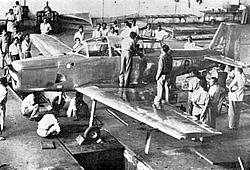 |
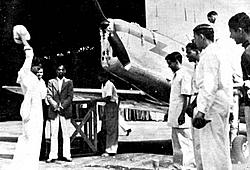 |
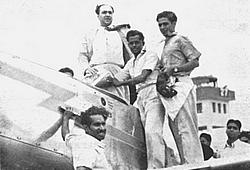 |
| Weighing in progress July 51 | Pre-flight prayer, garlands on ac and coconut breaking | Capt JK Munshi after first flight 5 Aug, 51 |
The Public Demonstration
A formal public launch of the aircraft was carried out on August 13, 1951. The chief guest was Air Vice Marshal Subroto Mukherjee, the senior-most Indian officer of IAF (later its Commander-in-Chief and Chief of Air Staff). Capt Jimmy Munshi took off and carried out steep turns and loops in front of all the people gathered to watch the HT-2 flying. These naturally included all workers and managers of HAL. While the HT-2 was airborne, AVM Mukherjee congratulated Dr Ghatge. He was also the first to congratulate the pilot as soon as he landed. Congratulatory message eventually came from a very large number of sources. These included Seth Walchand Hirachand, WD Pawley and the Maharaja of Mysore – all three were the founders of HAL. Laudatory messages also came from Mr Shyama Prasad Mukherjee, who had been responsible for convincing Jimmy Munshi to join HAL, JRD Tata (founder of Air India), General KM Cariappa (senior most Indian officer in the army), DGCAs of India and Ceylon, Thai Air Force and many other dignitaries, both Indian and foreign. Capt Jimmy Munshi resigned from HAL soon afterwards.
The HT-2 in IAF Service
The HT-2 was soon fitted with the Cirrus Major 150 hp engine, which suited it very well. The Chief Designer and his staff, with Flt Lt Suranjan Das, graduate of Empire Test Pilots School UK, as the test pilot, cleared the HT-2 for instructional duties in IAF. However, the first prototype was lost when Flt Lt Das bailed after the aircraft failed to recover from a spin.
Three aircraft were delivered to Begumpet (Hyderabad) airfield in 1955 for Pilot Instruction Course No. 68. Three instructors converted on it and took on one pupil each. Flight Cadet V Pais (pronounced “pious”, hence naturally nicknamed Pope) was one of the three. Now retired as an Air Commodore, Pope Pais clearly remembers the excitement and the rare honour of switching over from the Percival Prentice trainers, made by HAL under its first licensed production, to the indigenously designed HT-2. Some cadets of the 70th course also learnt to fly on it. By the 72nd Course the HT-2 had completely replaced the Prentice. IAF’s 150 HT-2 aircraft were used for initial training of pilots till 1989. All pilots currently serving in the IAF from the rank of Group Captains onwards learnt to fly on the HT-2. These include all Air Marshal pilots and even the Chief of Air Staff, Air Chief Marshal S P Tyagi.
In early 80s, the Cirrus major engine could no longer be supported due to lack of spares worldwide. A Lycoming engine was installed and the type was renamed HT-2L. Unfortunately, it gave considerable trouble, partly due to inexperience in handling piston engines and also because of the requirement of very sensitive adjustments of the fuel system. All other aircraft types in IAF had jet or turbo-prop engines using aviation turbine fuel. The HT-2 was retired in 1989 after thirty-four years of distinguished stint in IAF. It was replaced by the new HAL design, the HPT-32. This is now the only aircraft in IAF service fitted with a piston engine and using aviation gasoline. Perhaps it is time for the IAF to retire it also and induct a new turbo-prop basic trainer.
The HT-2 Out of India
In 1958 HAL succeeded in exporting twelve HT-2 aircraft to Ghana for initial training of its Air Force pilots. This was the very first export of any aircraft designed, developed or manufactured in India. Wing Commander LM Katre (later CAS) was deputed to Ghana to convert a few instructors to the aircraft. The entire exercise soon ran into trouble with instructors reporting difficulty in recovering from spins, though no aircraft actually crashed. The lack of interchangeability of parts and poor logistic support eventually led to scrapping all twelve aircraft. It is believed that at that time instructors were mostly Israelis who preferred the Fouga Magister for this role and eventually got their way. HAL did not export any fixed wing aircraft of any type after this fiasco.
In June 1958 HAL decided to show off the HT-2 in Australia. Flt Lt Sunandan Roy then flying as a test pilot in the company was also a qualified flying instructor. He was chosen to demonstrate the aircraft to possible purchasers including RAAF and flying clubs. He practiced eight-turn spins followed by cloverleaf loops. The last show of steep turns and slow rolls in reciprocal directions parallel to the spectator’s stands was barely a hundred feet above the ground. It was a very impressive demonstration. But it had almost no margin for error. At Adelaide, many teenage girls mobbed Roy and the press had very flattering comments on the visiting Indian stunt pilot. The adulation may have gone to his head. He ferried the aircraft to Brisbane for the next demonstration and took it up for a practice flight. He reduced the entry height of the show by one hundred feet and added one turn to the spin. The aircraft hit the ground having very nearly, but not quite, recovered from the last spin turn. Roy was fortunate to escape with only some facial injuries and in fact returned to flying back in HAL in a few months. But the effort of marketing the aircraft in Australia collapsed with his crash, even though a replacement aircraft was shipped to Australia without an Indian Pilot.
One civil registered HT-2 was also sent to Singapore. It did not seem to find favour with any flying club or private owner. Its eventual disposal is not known. However, it may be safe to conclude that it would have been junked.
The Designer Pilot
It is believed that Jimmy Munshi at one stage suggested to Dr Ghatge to increase the area of the tail plane. Perhaps he thought this would improve its stability and also its spinning behaviour. Dr Ghatge told him, “I am the designer and you the pilot. Stick to your own job and do not tell me what to do”. Dr Ghatge should have stuck to his own advice. Perhaps inspired by old time designers who flight- tested their own aircraft, he decided to fly the HT-2, that too solo for the very first time. It looked easy enough; going by what Jimmy had been doing in it. It is not clear if Dr Ghatge had any flying experience at all. He came in to land and soon nosed over. He was not hurt and there was not too much damage. Of course, the wooden propeller broke into pieces. Perhaps Dr Ghatge then decided to leave flying to the test pilots. Unfortunately, this also did not fare well. Jimmy’s successor Mr Namjoshi was killed in an HT-2 while practicing for a public demonstration.
The HT-2 Legacy
Dr VM Ghatge’s return to HAL to design and develop the HT-2 was a major milestone in Indian aviation industry. The success of the HT-2 gave a great morale boost for HAL’s designers. Unfortunately shortsighted policies held back the progress in indigenous designs that could have been made. Though some design projects at HAL followed the HT-2 over the three decades, real progress has only now been achieved with the Advanced Light Helicopter (ALH), Light Combat Air craft (LCA) and the Intermediate Jet Trainer (IJT) Design work is currently in progress on an Advanced Jet Trainer (AJT) evolved from the IJT and a hundred seat transport aircraft with multi-role capability to be used by both civil carriers and the military. It is time for HAL to build on this legacy of the HT-2 and help the nation to move closer to self-sufficiency in its aeronautical industry.
The Survivors
HAL produced a total of 166 HT-2 aircraft. Of these 150 were for Air Force, 12 for Ghana, and four for others. After the type was retired in 1992, the following aircraft are known to be existing at locations shown below.
| Version | Serial No | Location | Town / City | State | |
| HAL HT-2 | -NA- | Sainik School Korukonda (51) | Korukonda | AP | |
| HAL HT-2 | -NA- | Air Force Academy , Bidar AFS | Bidar | Karnataka | |
| HAL HT-2 | -NA- | Trinity Officers Mess | Bangalore | Karnataka | |
| HAL HT-2 | -NA- | The Heritage – SWAC Museum | Jodhpur | Rajasthan | |
| HAL HT-2 | -NA- | Air Force Administrative College | Coimbatore | Tamil Nadu | |
| HAL HT-2 | IX-472 | AFTC Jalahalli | Bangalore | Karnataka | |
| HAL HT-2 | IX-476 | Botanical Gardens | Pondycherry | Tamil Nadu | |
| HAL HT-2 | L | IX-480 | HAL Heritage Center | Bangalore | Karnataka |
| HAL HT-2 | IX-492 | AFS Jallahali | Bangalore | Karnataka | |
| HAL HT-2 | IX-502 | AFTC Jalahalli | Bangalore | Karnataka | |
| HAL HT-2 | IX-506 | AFTC Jalahalli | Bangalore | Karnataka | |
| HAL HT-2 | IX-509 | Bal Kendra | Quilon | Kerala | |
| HAL HT-2 | IX-712 | AFS Jallahali | Bangalore | Karnataka | |
| HAL HT-2 | IX-718 | Air Force Academy Museum, AFA Dundigal | Hyderabad | AP | |
| HAL HT-2 | IX-726 | Solapur Municipal Park | Solapur | Karnataka | |
| HAL HT-2 | IX-732 | Vintage Flight, IAF Museum Palam | Delhi | Delhi | |
| HAL HT-2 | IX-737 | IAF Museum Palam | Delhi | Delhi | |
| HAL HT-2 | IX-741 | Periyar Technology Center. | Chennai | Tamil Nadu | |
| HAL HT-2 | L | IX-743 | HQ Training Command | Bangalore | Karnataka |
| HAL HT-2 | BX-748 | Naval Air Museum, Dabolim | Goa | Goa | |
| HAL HT-2 | IX-752 | Bangalore Military School, Hosur Road | Bangalore | Karnataka | |
| HAL HT-2 | VT-DFY | Ind Inst of Science, Dept of Aero Science. | Bangalore | Karnataka |
Table Courtesy: Warbirds of India
This article appeared in the Air Enthusiast May-June 2005 Issue
Copyright © Gp Capt Kapil Bhargava . All rights reserved. Reproduction in whole or in part in any form or medium without express written permission of Gp Capt Kapil Bhargava is prohibited.
